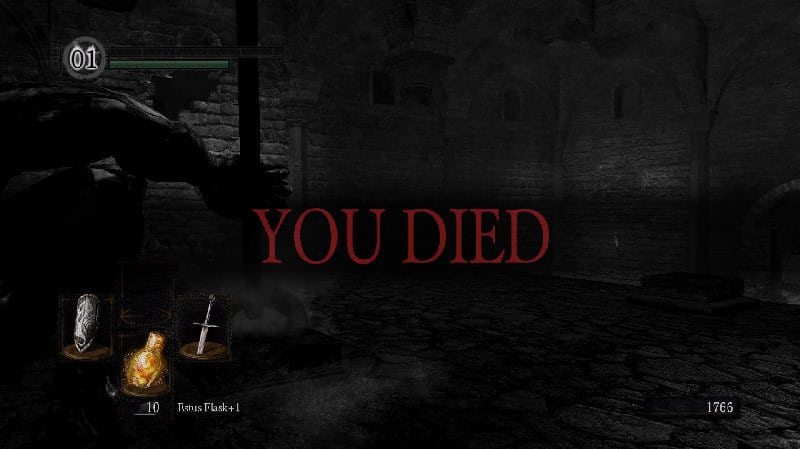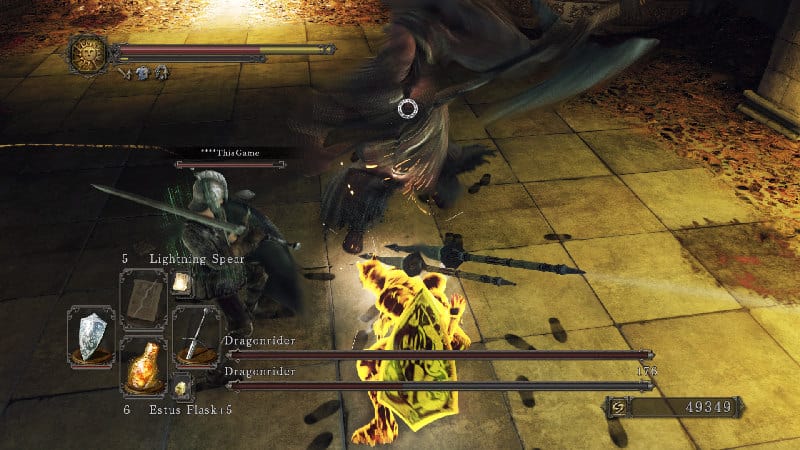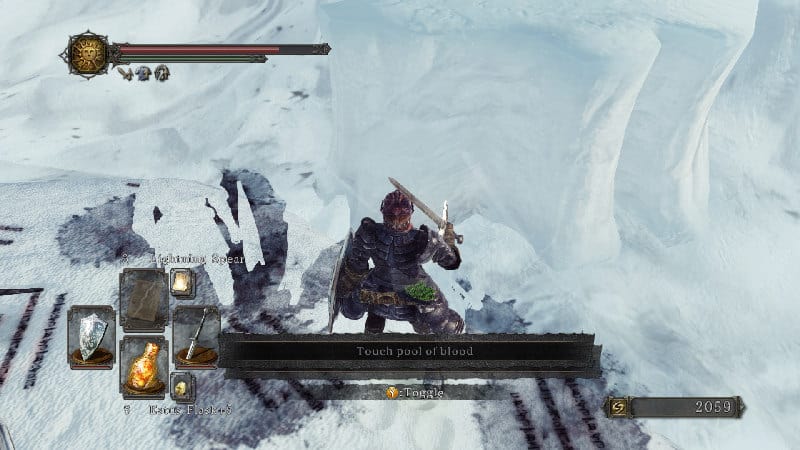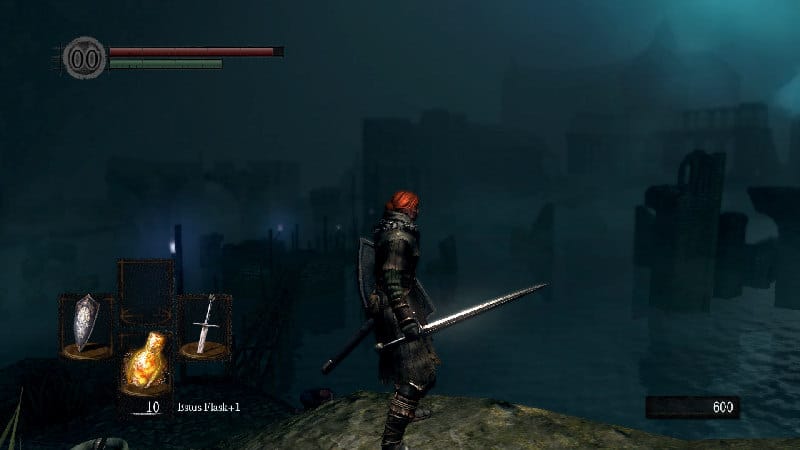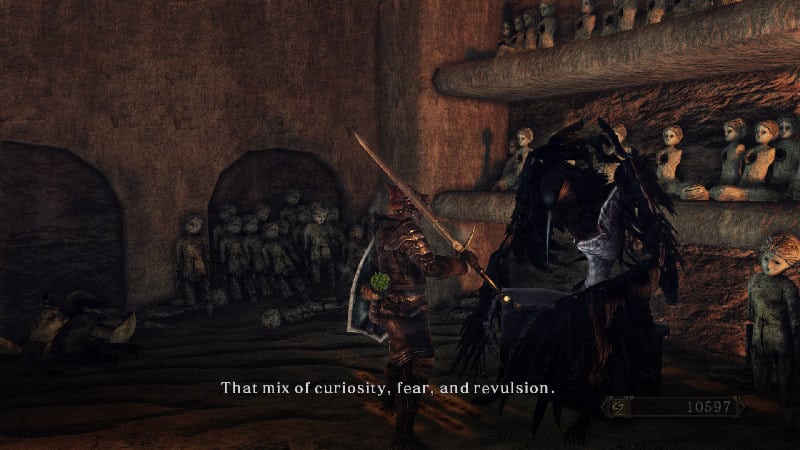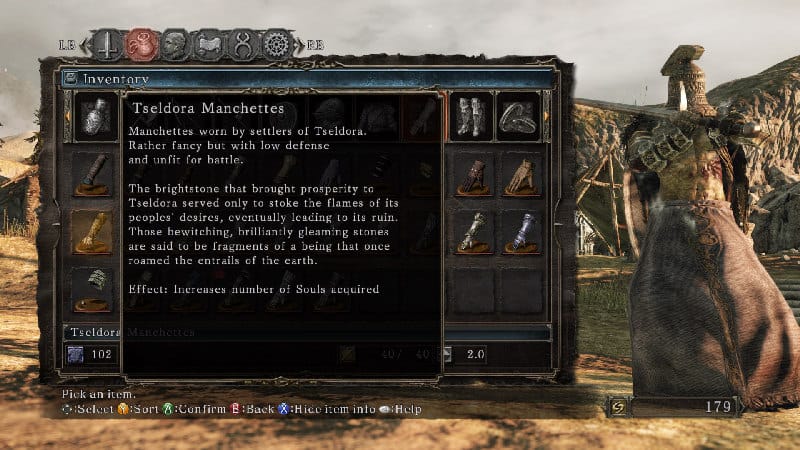With the release of Dark Souls III imminent worldwide, despite being live in Japan since March 24th, many fans are gearing up to tackle what is sure to be another difficult, rewarding journey constructed by legendary developer FromSoftware. With series director Hidetaka Miyazaki back at the helm (the man responsible for overseeing the development of Demon’s Souls, Dark Souls, and Bloodborne), fan excitement has swelled to an all-time high.
But what exactly is it about these games that makes them so special? To an outsider, they largely look like any other dark fantasy game, and even someone who gives them a proper try could potentially miss some of what makes them so poignant. So if you’re wondering what’s caused so many fans to love these games with such fervor and consistency, this Dark Souls Top Ten investigation is for you.
And it’s worth noting that while this is ostensibly about the titular franchise, almost all of these apply to Demon’s Souls and Bloodborne as well. Even if they’re not officially part of the same IP, the ties are so close that it almost doesn’t matter.
1. DIFFICULTY
If there’s anything the Dark Souls games are known for, it’s difficulty. While there’s certainly some incongruity with the actual difficulty versus the advertised, rigid mechanics and stiff challenge are core to the central experience. You can never truly lose, as your character will endlessly return after death, but the basic system has an inherent risk/reward loop.
On death, you drop all the souls you’ve absorbed, which act as both currency and experience points. If you return safely to the bloodstain left where you died, you can retrieve your souls; but die on the way there, and your previous bloodstain will vanish (along with your souls) to be replaced with your latest one—likely much more anemic. This sense of impermanence is what keeps things so exciting. It can all be lost in a moment.
Add in huge rosters of tough bosses and lots of creative enemies whose patterns must be learned if you’re to succeed, and Dark Souls earns its reputation as a series not for the faint of heart.
2. WORLD-BUILDING & LEVEL DESIGN
Another core principle that ties the games together is the manner in which their worlds are built. This is most obvious in the immense and grandiose architectural and structural designs scattered throughout, with huge castles and crumbling ruins brought to vivid life through genuine artistry; but it’s also represented in geographical formations and in-world storytelling. As anyone who’s ever had to wade through what awaits in the flooded passageways at the bottom of New Londo can tell you, there are sights that not only dazzle with their spectacle, but help flesh out the often heartbreaking details of the world’s decline.
But it’s not just the way these worlds look—or what interesting constructions populate them—that make them worthwhile. A lot of the appeal is also in how they’re laid out mechanically. A mix of branching paths and linear structure, each area often snakes around in interesting ways to double back on itself, opening up shortcuts that make the circuitous routes easier to navigate on subsequent trips. These areas also tend to intersect with one another in interesting ways, and while Demon’s Souls, Dark Souls, Dark Souls II, and Bloodborne all have their own interpretations on level design, some of which are more successful than others, the consistently high bar of quality makes all of their worlds a joy to explore.
3. MULTIPLAYER
These worlds don’t have to be explored alone. Demon’s Souls began what has since become an ongoing tradition. The game remained a largely single-player experience, allowing players to instead offer their assistance to one another via summoning signs or antagonistically invade each other. In the event a player wanted help with a particularly difficult boss, they could use one of these signs to summon assisting players, or they could leave one and thus be summoned by someone else for a potential reward. Conversely, player-versus-player combat was achieved by forcibly invading (or being invaded by) another player, an event which would generally come as a surprise to the invaded player, which made the online game experience extra tense.
Each Dark Souls game has featured this same general setup alongside their own addition: covenants. Covenants allow players to swear allegiance to a cause in order to achieve bonuses, generally via cooperative or PvP gameplay. Though Bloodborne moved away from this concept somewhat, it’s back in full force for Dark Souls III, which appears to have taken the robust design improvements of the second Dark Souls game and combined them with the joie de vivre of the first.
4. COMMUNAL PROBLEM-SOLVING
Players of Demon’s Souls could also leave notes for each other, cobbled together from a collection of pre-written messages. Leaving these upon the ground would let players share information with each other about secret areas, ambushes, treasure, and enemy strategies, albeit in limited fashion. It led to a form of communal problem-solving both within the game and outside of it, as everyone tried to plumb the game’s cryptic depths for knowledge. Yet this too had a double-edged nature to it, as players could leave misleading messages if they so chose.
Deaths also conveyed information. Bloodstains upon the ground could be used to show players the last few moments of a fellow adventurer’s life via ghostly afterimages that warned of potential dangers.
These traditions have survived virtually unchanged. The same systems have been maintained through the rest of the Souls games and Bloodborne, and are as helpful and amusing today as they were in 2009.
5. TONE
The idea of being unexpectedly and forcibly invaded, along with the harrowing gauntlets of regular enemies, helps to set the tone of the games, but seemingly every aspect of the design works toward a tone and atmosphere that are unmistakable. The land heaves itself up in imposing undulations, abandoned ruins and decaying castles rise from their stone roots into the sky, and heavy horizons feel weighed down by their contents. Dark Souls III takes a lot of cues from Bloodborne’s visual design, and the story concepts work with this to make the world feel ashen, barren, and drained of color, which is in intentional contrast to the previous two games, as the world’s flame seems to be as weak as it’s ever been. No entry in the franchise has real-time day/night cycles, so each area feels slightly surreal, existing out of time, which lends an even greater tonal weight to that of the legendary stories being told.
6. STORY DELIVERY
Story is a huge element of every Souls game, but is also the easiest thing to overlook due to FromSoftware’s intentionally obfuscated storytelling methods. While the games do have glorious – introductory – cutscenes, the actual events that take place in the games can be convoluted and hard to make sense of, and the endings can seem even more ambiguous because of this. And yet there are concrete stories being told; it’s merely up to the player to discover all their details.
Instead of dramatic, expository scenes, our information mostly comes from slight hints gleaned from talking to non-player characters, environmental hints such as the types of enemies that inhabit areas and the types of items they drop upon death, and the descriptions of those items. Most uniquely, it’s this last that has really come to define the Souls games, where written descriptions of armor, weapons, spells, and consumable items often yield tantalizing bits of information about everything from existing characters, to the histories of kingdoms, to the lives and motivations of mythological figures.
7. STORY RICHNESS
It seems counterintuitive that such an important element as story would be hidden behind so many layers, and one might expect that the fiction here would consequently be less considered, but most players who dive into the lore of the Souls games find that the actual content of the fiction is top-notch. The tales are often heartbreaking, filled with intrigue, tragedy, and pathos. NPCs have their own tales which show them struggling and changing in the face of ongoing existential crises. Players are generally required to bridge certain gaps of knowledge by forming their own theories about certain things as well, which has led to an active community of lore enthusiasts, lead by such YouTube celebrities as VaatiVidya and EpicNameBro amongst others, who put together elaborate videos to explain in-game fictional concepts for those who either don’t have the time or inclination to work out all the details for themselves, or who just want to discuss some of the finer points.
8. COMBAT
But you won’t spend the bulk of your time reading in any Souls game. The pen and the sword are mighty in equal measure, but the combat is the core of the experience.
On its surface, it doesn’t look particularly extraordinary. You can attack, dodge, block, and most other things you’d expect. On a deeper level, however, the Souls style is all about commitment and timing. Where many games allow you to mash buttons, in Dark Souls, this will generally get you killed. You need to commit intentionally to each attack and evasion, which is all the more important in PvP gameplay. Born from the same mentality, parrying enemy strikes and retaliatory riposting are essential skills, which require instinctual timing and positioning. Reading the movement and attack patterns of regular enemies, bosses, and human opponents thus also becomes extremely important, and failing to do so will almost universally equal a corresponding punishment. The huge number of weapons makes this all the more difficult (and worthwhile).
9. CHARACTER DESIGN
To stay protected, players can don a large number of different armor sets, all of which have fantastic and varied visual themes. These are also wrapped up in the franchise’s stellar character designs, as much of what makes characters visually distinct is the armor that they wear. Creature design is equally impressive, though some titles arguably get more creative than others. Decrepit Undead Hollows look appropriately feeble, knights stand tall and imposing, and the various bosses all seem like penultimate expressions of whatever concepts they embody. While you might say that many games have great art, and wonder why I’d consider it a unique facet of this particular franchise, the fact is that most properties fail to deliver the intricacy and sheer amount of detail these designs do, not to mention the implications those details have on the lore of the game. It’s not often in gaming that we can look at a piece of armor or an engraving on a door to glean more insight into the societies that crafted them.
The Dark Souls: Design Works books are tremendously valuable for anyone with an interest in exploring these fantastic designs further.
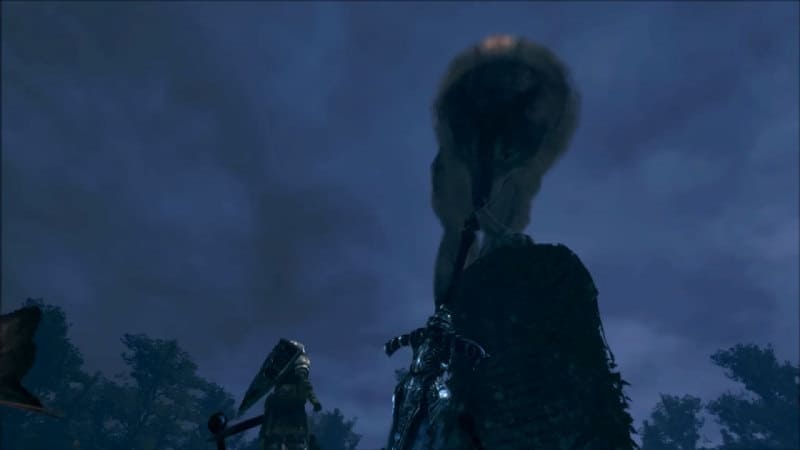
Character and creature designs in the Souls games leave a long-lasting impression. A moment of silence for Sif, if you please.
10. DISCONTINUOUS CONTINUITY
Lastly, we have the simultaneous closeness and distance of the worlds in each title. In Dark Souls II, an unknown passage of time has elapsed since the events of the first game. Players can’t be sure whether they’re in the same land, only changed, or a different place altogether. It’s interesting to see that the games are clearly closely tied together, yet only have so much information to support the many theoretical links. There are a lot of hints that make for great speculation, but complete answers generally remain elusive.
While we haven’t been able to completely explore the lore offerings that will come with Dark Souls III, we do know for sure that there will be more information awaiting us about the events of the past two games. But if FromSoftware’s track record is anything to go by, there will still be plenty of frayed threads that remain open to interpretation.

Ties between the games are concrete, yet veiled. Putting the pieces together is a job for the player.
Dark Souls III released on PC (via Steam), Playstation 4, and Xbox One for all non-Japan regions on April 12th. We can’t wait to see you all in the game for healthy doses of both jolly cooperation and hardcore PvP. Umbasa!


